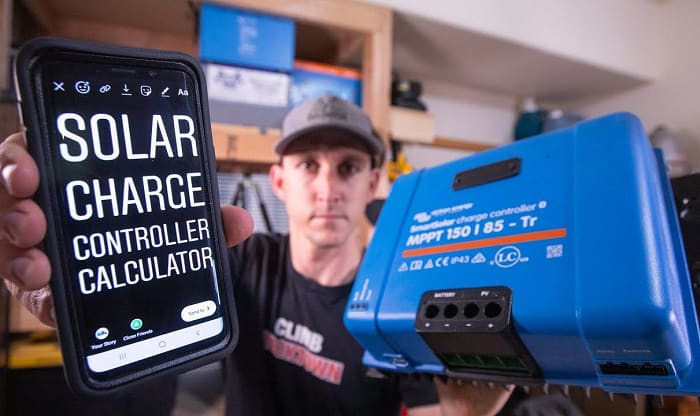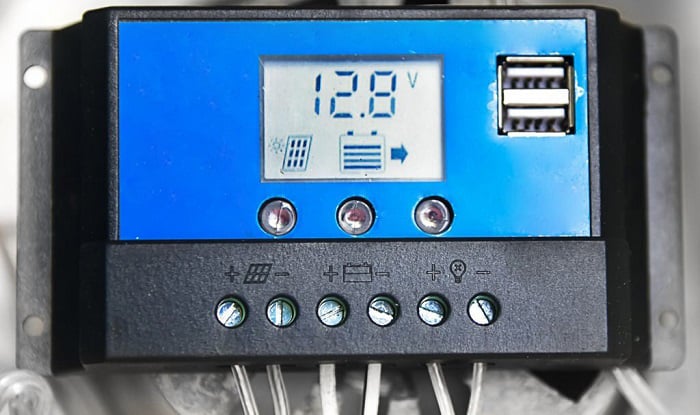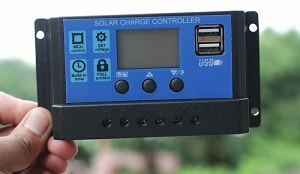A Maximum Power Point Tracking (MPPT) controller is generally a digital tool to help optimize power conversion from solar panels, particularly in RVs. Now you’re wondering, how to size a MPPT solar charge controller?
Use the following steps to find the right size solar charge controller:
- Load approximation
- Identify the battery size
- Identify the solar power capacity
- Calculate the MPPT size
Although you may not need special equipment to complete this task, you might need to gather some details to help you find an MPPT solar charge controller with the correct size.
Table of Contents
Step-by-Step Guide
Take note that you may not need any special tools to find the answer to the question, ‘what size MPPT controller do I need?’ However, you need to understand certain elements to find and use the correct size solar charge controller.
What to Prepare
- ROV value: The MPPT controller’s label should show if it can handle either 12- or 24-volt batteries. For example, the ROV value is 40 amps if the label says ROV-40.
- Maximum solar input voltage: You can typically determine this number by looking at the number of panels attached in series. For example, the maximum voltage is 520 watts if you connect two 260-watt panels.
- Type of battery: An MPPT controller will usually display different values if it’s attached to either lithium or lead-acid battery. Both lead-acid and lithium batteries can be sized as Ah. But only lithium variants may also have Wh sizes.
Detailed steps
After getting the different particulars required for sizing solar charge controller, you can proceed to use an MPPT sizing calculator.
However, suppose you don’t have direct access to that tool. In that case, the following step-by-step guide should lead you to an MPPT solar charge controller with an appropriate size:
Step #1: Load Approximation
First, list all the devices that will require solar power. Also, note the amount of time that these items will be running.
Then, use the following formula to calculate for the maximum current produced by the estimated load:
Current (in amps) = wattage divided by voltage
One way to look at the power requirements conveniently is to create a load table. That way, you can gain insight into which device will put the solar battery at risk of a surge.
Step #2: Identify the Battery Size
Take note that the solar battery size isn’t the same as the dimensions of the panel. You can find the approximate amount of energy supplied by the solar battery by calculating its amp or watt-hours.
Find that value using this formula:
Volts multiplied by amp-hours, then divide the result by 100
So a 12-volt device with 105 amp hours can run about 12.6 hours on a single solar battery.
But as mentioned previously, the battery type is also vital to finding the correct MPPT solar charge controller.
Keep in mind that lead-acid uses amp-hours while lithium batteries may use watt-hours for their calculations. Also, a lithium battery may have higher amp hours than lead-acid.
Step #3: Identify the Solar Power Capacity
The solar panel should be sufficiently large to supply power to connected devices on a particularly sunny day. Determining the battery’s capacity relies on certain factors like:
- Location and orientation of the panel
- The solar panel’s efficacy
Still, you can determine a rough estimate of the solar panel’s power capacity by using the following formula:
Solar panel wattage multiplied by average sunlight hours per day multiplied by 75%.
For example, one 250-watt solar panel gathers power from direct sunlight for about 5 hours per day. If so, its maximum capacity is 937.5-watt-hours per day.
Step #4: Calculate the MPPT Size
After gathering the other details, you can now calculate the size of your MPPT solar charge controller. The formula to use is:
Maximum voltage multiplied by current equals the power for the solar controller.
For instance, you have one 200-watt solar panel connected to a 12-volt battery. If so, you’ll have a maximum current of 16.67 Amps.
As for the other particulars, taking note of those details helps prevent oversizing a solar controller. Doing so may demand higher-than-needed upfront costs.
Helpful Tips
You can modify some equipment to alter the values provided by your chosen MPPT solar charge controller. Some ways to achieve this objective are:
- Use multiple MPPT controllers with one solar battery bank.
- Avoid connecting the charge controller to AC loads to prevent miscalculations.
- Place the controller near the battery for precise readings.
Conclusion
At this point, you should now know how to size a MPPT solar charge controller. Remember, you should take note of specific details, such as the solar power capacity and battery size.
If done correctly, you won’t oversize the solar controller. Also, you’ll most likely install a unit that can accommodate your daily solar power usage.

Hi, I am Joseph. Carpe diem! Seize the day! That’s always been my life motto. If you haven’t seen some of the most beautiful places in the country, you are missing out on incredible adventures.




